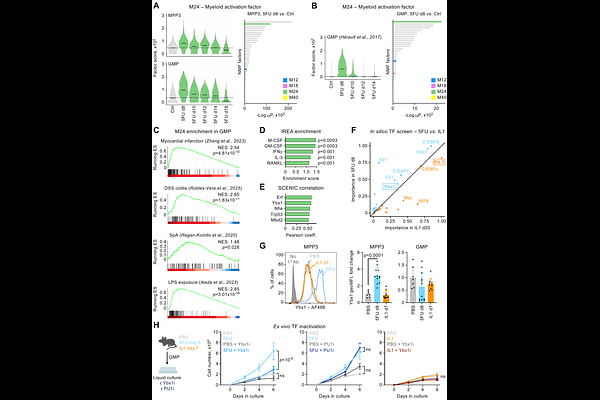Quantitative molecular cartography of emergency myelopoiesis reveals conserved modules of hematopoietic activation

Quantitative molecular cartography of emergency myelopoiesis reveals conserved modules of hematopoietic activation
Swann, J. W.; Fung, J. H.; Chen, Z.; Olson, O. C.; Collins, A.; Lhakang, T.; Proven, M. A.; Zhang, R.; Rabadan, R.; Passegue, E.
AbstractHematopoietic stem and progenitor cells (HSPC) respond to infections, inflammation, and regenerative challenges using a collection of cellular and molecular mechanisms termed emergency myelopoiesis (EM) pathways. However, it remains unclear how various EM inducers regulate HSPCs using shared or distinct molecular mechanisms. Here, we generate a comprehensive and generalizable cell annotation method (HemaScribe) and a refined quantitative model of hematopoietic differentiation (HemaScape) using single cell RNA sequencing (scRNA-seq) of HSPCs, which we apply to a broad range of EM modalities. We uncover multiple strategies to enhance myelopoiesis acting at different levels of the HSPC hierarchy, which are associated with both unique and shared transcriptional response modules. In particular, we identify a myeloid progenitor-based module of EM engagement across diverse inflammatory challenges, which informs outcome in adult and pediatric human acute myeloid leukemia. Collectively, our work illuminates fundamental regulatory mechanisms in hematopoietic regeneration that have direct translational applications in disease contexts.